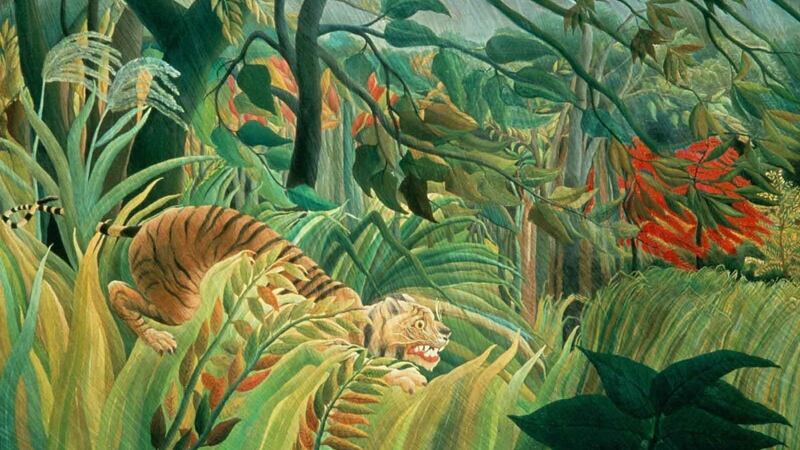Irish woman Penny Day is head of Irish art and director of modern British art at Bonhams on New Bond Street in London. Bonhams is a privately owned British auction house and one of the world's oldest and largest auctioneers of fine art and antiques.
Bonhams has 60 specialist departments and offices worldwide, including in Ireland, and conducts some 400 annual sales in London, New York, San Francisco, Hong Kong and Los Angeles. Bonhams Ireland office is at 31 Molesworth Street, Dublin 2.
What’s your background?

I grew up in Co Laois with a rector and teacher for parents and then went to co-ed boarding school, the King’s Hospital in Dublin; my best friends to this day are the ones I made there.
I spent a year at the Institute of Professional Auctioneers and Valuers (IPAV) on Baggot Street doing a diploma in fine and decorative arts before completing my degree at Trinity College Dublin in history of art and classical civilisation. My actual specialism there was 16th century Spanish art so it’s funny how things turn out.
How did you get into the art auction business?
After graduating, I thought about going into conservation and spent a short time with the National Gallery of Ireland learning about restoring oil paintings with Andrew O'Connor, head of conservation at the time, and then with my aunt, Kathryn Day Carrigan, a gilding conservator who specialises in frame conservation, in her studio.
I also studied gilding at West Dean College in Chichester and still do the odd bit to keep my hand in. Understanding the physical condition of works and their presentation is a huge part of what I do now so I'm grateful I had the chance to absorb that early on.
In 2004 I moved to London. After a short period of odd jobs, I spent a year and a half at Christie’s, working with Irish and Victorian art before moving to Bonhams modern British and Irish art department 10 years ago.
I’m very lucky as I have a great team here and enjoy coming to work every morning. No two days are the same.
What are your career highlights?
It's always rewarding when you can help somebody achieve a personal goal by selling their art for the best possible price, be that for school fees, a new house or as in 2013 when I handled the sale of Lucian Freud's 8x12in drawing Oil-bound Puffin for £385,250 (€430,000), the vendor gifted the entire proceeds to charity.
Irish and British art can turn up in the most unexpected places and I’ve been lucky enough to find great pictures in places as far-flung as Hong Kong and Texas, among others.
Favourite memories include securing the consignment of a Daniel O’Neill from within the Arctic Circle and escorting two large Gerard Dillon paintings across the entire length of France by train, to be auctioned in London.
It’s not all about the sales, though, and I’m proud to have helped arrange long-term loans and bequests to institutions such as the Crawford Art Gallery and the National Gallery of Ireland, as well as securing privately owned masterpieces for major international exhibitions such as the Frank Auerbach at Tate Britain.
What advice would you give collectors/investors?
It’s always wise to buy the very best example of what you can afford; one good picture is worth ten average ones. The “big names” such as Jack Yeats and Paul Henry are still holding their value well and will likely carry on doing so, in my opinion.
At the more modern end of the spectrum, I wouldn’t be surprised to see prices for Patrick Scott continue to increase, as his work becomes more internationally recognised.
And try not to always sit in front of a computer browsing galleries and salerooms; get out there and stand in front of things. There’s no better way to learn to recognise quality (or lack thereof!) than by looking at as much as possible in person.
What do you personally collect and why?
One of the dangers of working with amazing fine art every day is that you can unfortunately become quite picky about what goes on your own walls. So a lot of the space in my apartment in east London is actually blank.
That said, I do have a picture by neo-romantic artist John Craxton that I am fond of. Both my grandmothers were painters (one of whom founded the Dún Laoghaire Art Group in the 1960s) so I have some of their works hanging. They studied in Dublin under artists such as Kenneth Webb, Sean O’Sullivan, Leo Whelan and Seán Keating, who only taught when they needed to pay a few bills apparently!
What would you buy if money were no object?
I don’t think great art necessarily has to mean expensive art, and there are some more affordable artists such as Cecil King that I really love. But I would happily have one of contemporary Irish painter Elizabeth Magill’s early, ethereal landscapes.
In terms of sculpture, it would be a 1930s carving by Dame Barbara Hepworth or a piece by Dublin-based artist Jason Ellis. The two share a quiet beauty that I admire.
Outside of art, I'm secretly a bit of a petrol-head so a Lotto windfall might mean a vintage Jaguar and a house in Dunmore East to park it in.
What’s your favourite work of art and why?
This is tough as it changes daily or even hourly depending on my mood. So I am loath to pick just one but I do love the naive exoticism of Henri Rousseau's jungle pictures like Surprised! (aka Tiger in a Tropical Storm; 1891, National Gallery, London). That tiger makes me smile every time.
bonhams.com
In conversation with Michael Parsons











